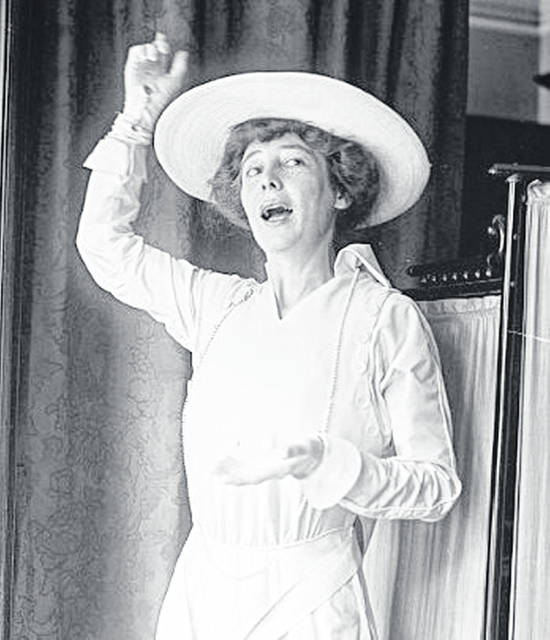
Her future work she talked of much;
Of women’s rights and how to vote;
On various topics she did touch;
And from the masters she could quote.
— Wenona Marlin, the New York Times 2015
Wenona Marlin was born in 1871 in Greenfield. She grew up comfortably, her father a Union army veteran and her mother something of a Greenfield socialite. She attended Greenfield High School and graduated in 1888, but she refused to get married, much to the consternation of her parents. There was too much she wanted to see and do; she didn’t want to settle down. She moved to Cincinnati and became a stenographer for Proctor and Gamble, earning enough money to move to New York City.
Marlin wasted no time in speaking out as a proud New York City suffragette. By 1905, she was a leader in the women’s rights movement, speaking at events and writing for newspapers across the country. She gained notoriety for her newspaper articles, which appeared in publications like the New York Times and the Washington Herald. She was unapologetically blunt in her articles, and her message wasn’t always well received by the public.
As she once controversially stated, “The fact that many men today regard the vote with such little respect is partly due to the fact they never did anything to earn it.”
While fighting for the vote, she worked for the Harper Brothers Publishing Company and traveled extensively through Europe, South America and Asia. She even reported on the construction of the Panama Canal in 1913. However, when the unmarried Marlin tried to re-enter the United States, she wasn’t permitted because she wasn’t considered a citizen. She later was able to re-enter the U.S., but she detailed her struggles in a widely circulated news story titled, “Am I Not A Citizen?” Her article argued that she shouldn’t be defined by her marital status, stating, “Fortunately, I do not have a husband.”
In 1917, Marlin entered a polling booth illegally. Police threatened her and demanded she leave, but she calmly stated she was only there to observe the process, much like Susan B. Anthony had done years before. She was forcibly removed from the polling place, and the scandal made the papers the following day.
Marlin led the mounted division of the woman’s parade in New York, riding a black stallion down the streets of New York dressed in a fine dress and a silk hat. She later became a part of the “Silent Sentinels,” a group of women who picketed the white house lawn in protest of President Woodrow Wilson’s dismissal of the suffrage movement. Marlin carried a sign that read, “Mr. President, how long must women wait for liberty?” Others quoted excerpts of Wilson’s own book about freedom and equality. For two years, the Silent Sentinels protested with a powerful combination of larger-than-life signs and silence. In 1919, 20 Silent Sentinels were arrested, jailed and beaten. Marlin managed to avoid arrest, but she was outraged at the brutality and continued to fight for the vote despite the growing threats against protestors.
In 1920, suffragettes everywhere rejoiced. After nearly a century of protesting and persecution, the 19th Amendment gave women the right to vote.
Mzrlin remained a member of many women’s equality movements until her death in 1945. She never married, but she became independently wealthy through her work as a successful journalist and advocate for women’s rights. Upon her death, she left thousands of dollars to the Greenfield Municipal Hospital and Greenfield First Baptist Church in her hometown. The suffragette, writer, author and activist can be credited with helping secure the vote for generations of women to come.
Information for this story came from Greenfield Historical Society files and the Library of Congress.
Isabella Warner is a stringer for The Times-Gazette.


